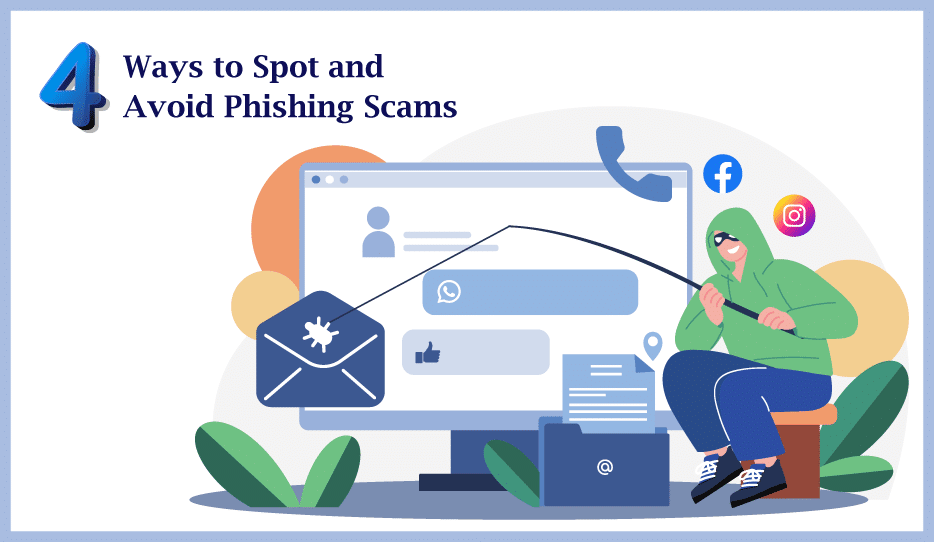
Phishing scams are a widespread problem in today’s digital age. Criminals use this method to obtain sensitive information from individuals or businesses. Phishing attempts can come through email, social media, phone calls, or text messages. They are often disguised as legitimate communication from a reputable organization or individual, encouraging the recipient to click on a link, download a file, or provide sensitive information. In this article, we will discuss 4 ways to spot and avoid phishing scams and prevent such attacks from causing damage.
How To Recognize Phishing
Phishing scams can be difficult to identify, but there are some warning signs to watch out for.
Watch out for urgent or threatening messages that demand immediate action.
Be cautious of messages that request personal information like passwords or credit card numbers.
Look for misspelled words or grammatical errors in the message.
Be wary of links or attachments in emails from unfamiliar senders, as they can contain malware or viruses.
Check the sender’s email address and look for any discrepancies or unfamiliar domains.
Stay vigilant and watch for these warning signs to help protect yourself from falling victim to a phishing scam.
Avoid phishing scams
To avoid falling prey to a phishing scam, here are four ways to spot and prevent such attacks:
Use of Security Software
Security software is designed to protect computers, servers, laptops, and other devices from malicious attacks like viruses or malware. Such software can help detect and block phishing attempts before they cause damage. By installing and regularly updating security software, users can protect their devices from phishing attacks.
Security Software Automation
Software should be set to auto-update to ensure it is up-to-date with the latest security patches. This helps prevent security issues and improve compatibility. Regular software updates can also provide additional security features and keep devices safe from emerging threats.
Use of Multi-Factor Authentication
Multi-factor authentication is a process that adds an extra layer of security to the login process. This process requires users to provide two or more pieces of information to verify their identity before gaining access to an account. This method helps to ensure that accounts are only accessed by authorized users.
Backing Up Data
Backing up data is a crucial step in protecting against data loss. Regular data backups also protect against human errors, hardware failures, viruses, natural disasters, and other unexpected events. It is recommended to back up data regularly and store it in a secure location so it does not cause work interruption in case of cyber-attacks like ransomware.
Steps to take after accidentally responding to a phishing email
If someone has responded or replied to a phishing email, it is essential to take immediate action to avoid further damage. Here are some steps to follow:
Change Account Passwords: Change the passwords of all accounts immediately. It is recommended to use strong passwords that are unique for each account.
Report the Phishing Attack: Report the phishing attack to the relevant authorities, such as the bank or company that the phishing email appeared to be from. Reporting the phishing attack can help prevent further damage and protect others from falling victim to the same scam.
Look into the Phishing Attack: Investigate the phishing attack to determine if any sensitive information was leaked and if any damage was caused.
Take Steps to Avoid Future Attacks: Take steps to avoid future phishing attacks, such as educating oneself and others about the warning signs of a phishing scam, using security software, and being cautious when opening emails or clicking on links. By following these steps, individuals can protect themselves from phishing attacks and keep their sensitive information safe.